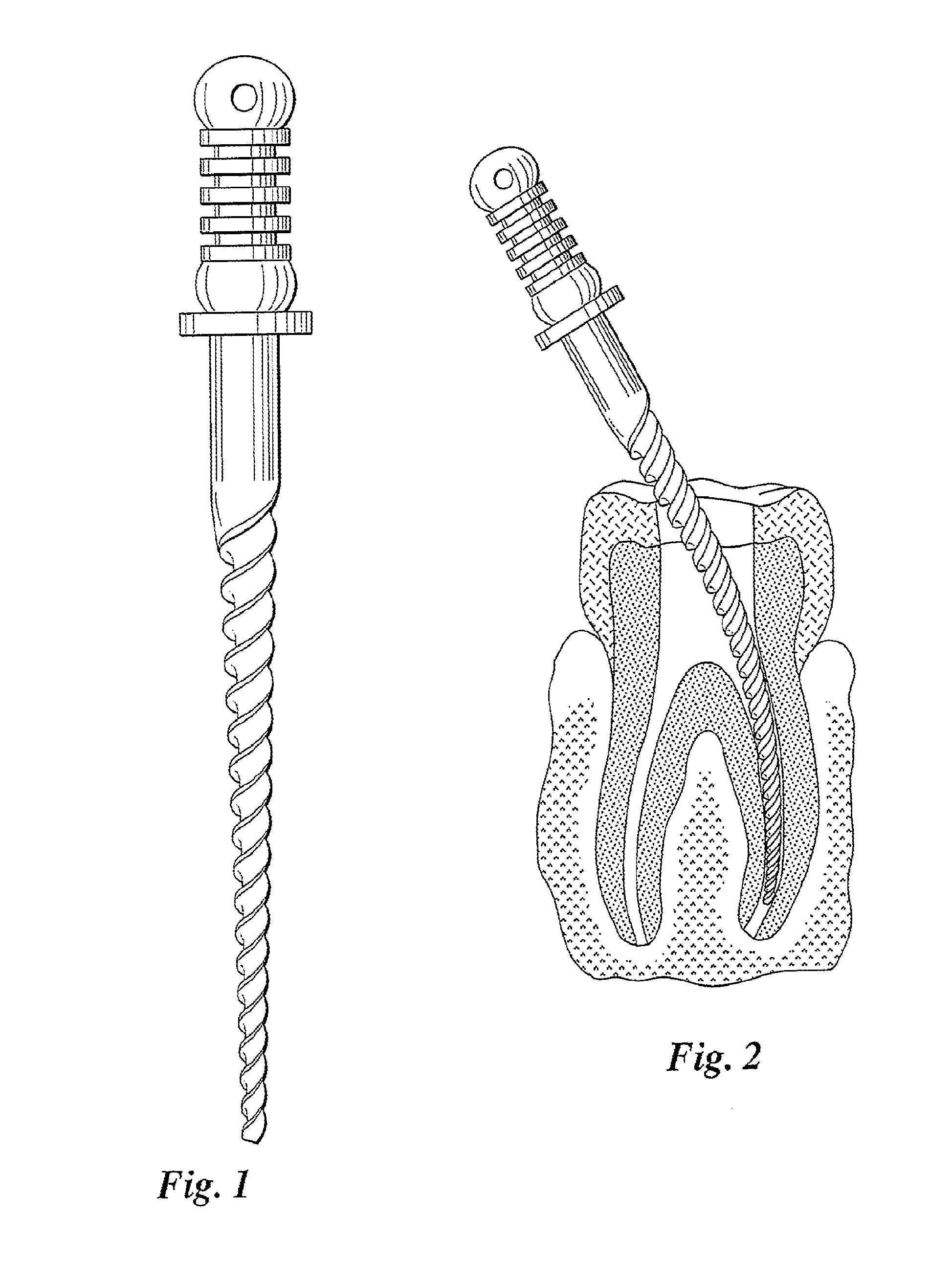Fatigue-Resistant Nitinol Instrument
a nitinol, fatigue-resistant technology, applied in the direction of heat treatment apparatus, teeth nerve/root treatment implements, furnaces, etc., can solve the problems of cyclic fatigue, material cannot withstand the same level of stress/strain, and shape memory is not a desired feature, etc., to improve resistance to cyclic fatigue, reduce the effect of process steps and reduced shape memory properties
- Summary
- Abstract
- Description
- Claims
- Application Information
AI Technical Summary
Benefits of technology
Problems solved by technology
Method used
Image
Examples
Embodiment Construction
[0024]The starting material for use in an apparatus and method practiced according to this invention is a Nitinol composition consisting of preferably 55.8+ / −1.5 wt. % nickel (Ni), with the balance being that of titanium (Ti). There are also trace elements including iron (Fe), chromium (Cr), copper (Cu), cobalt (Co), oxygen (O), hydrogen (H), and / or carbon (C), generally less than 1 wt. % each. The Nitinol composition may also consist of 50+ / −10 wt. % nickel, with the balance being that of titanium and the trace elements.
[0025]Referring first to FIG. 3, a prior-art process shows the steps normally employed to convert a Nitinol wire into a stable martensite state useable for manufacturing fatigue resistant devices. One example of this type of device is the endodontic instrument illustrated in FIGS. 1 and 2. In the prior art process, untreated Nitinol wire is unwound from a spool and passed through an annealing oven, a series of dies, and final heat thermal processing operation. The t...
PUM
| Property | Measurement | Unit |
|---|---|---|
| finish temperature | aaaaa | aaaaa |
| temperature | aaaaa | aaaaa |
| temperature | aaaaa | aaaaa |
Abstract
Description
Claims
Application Information
 Login to View More
Login to View More - R&D
- Intellectual Property
- Life Sciences
- Materials
- Tech Scout
- Unparalleled Data Quality
- Higher Quality Content
- 60% Fewer Hallucinations
Browse by: Latest US Patents, China's latest patents, Technical Efficacy Thesaurus, Application Domain, Technology Topic, Popular Technical Reports.
© 2025 PatSnap. All rights reserved.Legal|Privacy policy|Modern Slavery Act Transparency Statement|Sitemap|About US| Contact US: help@patsnap.com



